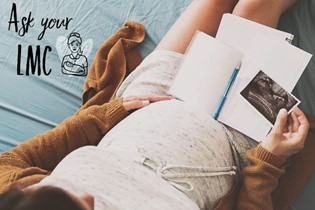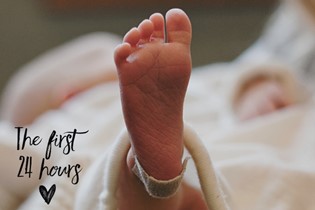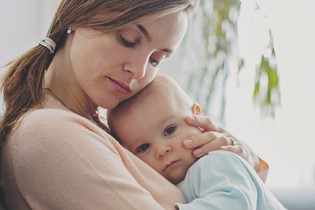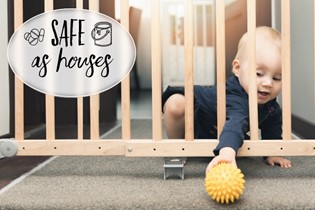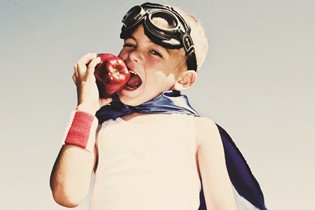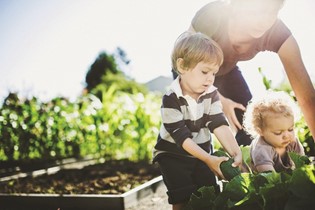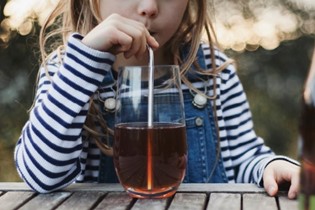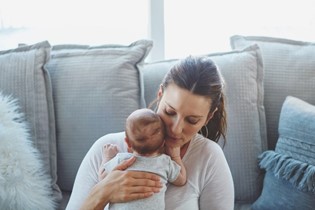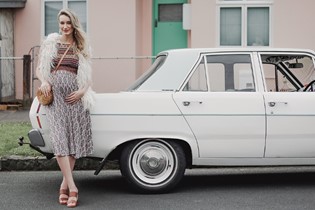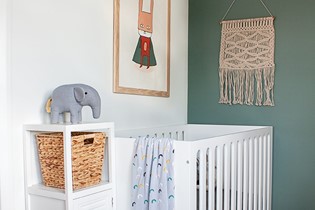Birth: from baby's perspective
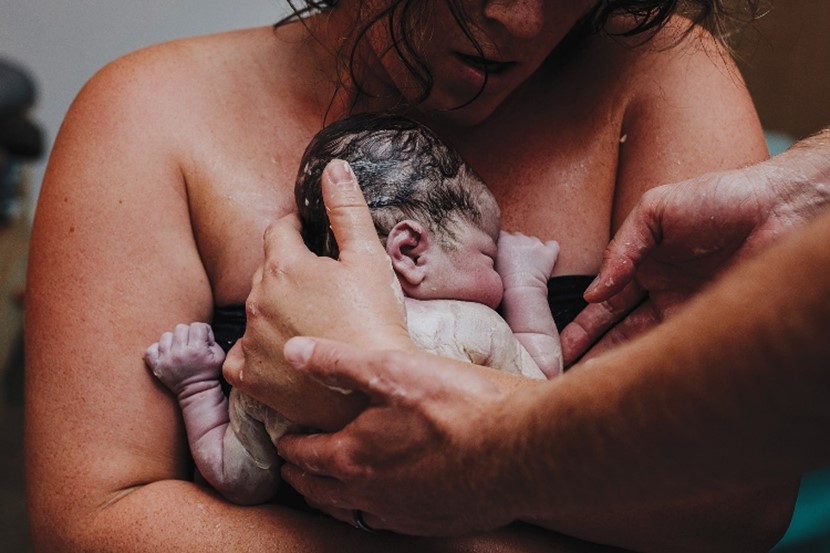
With thoughtful research, an active imagination and well-earned poetic licence, Sarah Tennant presents a baby’s eye view of birth.
Does labour hurt? I don’t mean for the mother. I’m writing this while heavily pregnant with my fourth child – that question has been more than adequately answered for me already, thank you very much. I mean for the baby.
After all, on paper, birth from a baby’s point of view looks pretty bad. Squeezing, crushing, skull-bones being squished to the point of overlapping, being upside down, suddenly emerging into cold, agoraphobia-inducing bright open space – it certainly doesn’t sound like the best birthday ever.
And maybe it isn’t. Or maybe it’s fine. The fact is, scientists are operating in the realm of wild guesswork when it comes to a baby’s experience of labour.
After all, asking them how they feel isn’t really an option – unless we care to trust the likes of Ray Bradbury and Salvador Dali, who claimed to remember their own births in detail. (To put his recollections into perspective, Dali also claimed to have received visions of fried eggs while in the womb.)
What we can do is measure stress responses, such as cortisol levels and heart rates, and assume that they mean the same thing in babies as they do in adults – ie, well, stress. There’s a lot of evidence in favour of that approach. Babies have higher stress responses in higher-intervention births, and babies with high stress responses during birth tend to be fussier as infants, suggesting moderately long-lasting trauma from the experience.
But then, maybe not – other scientists claim that neurological function in babies isn’t fully developed at birth, so what seems like pain on a graph may not be interpreted by the baby as actually unpleasant. That is, they haven’t yet learnt that pain is pain.
Then again, very young newborns definitely seem to respond to pain from procedures such as heel-prick tests or circumcisions in the conventional ‘I don’t like this, make it stop’ sense. It’s a controversial issue among scientists, and until it’s decided, perhaps it’s best just to take the philosophical approach: whether it hurts or not, we all went through it and most of us turned out okay.
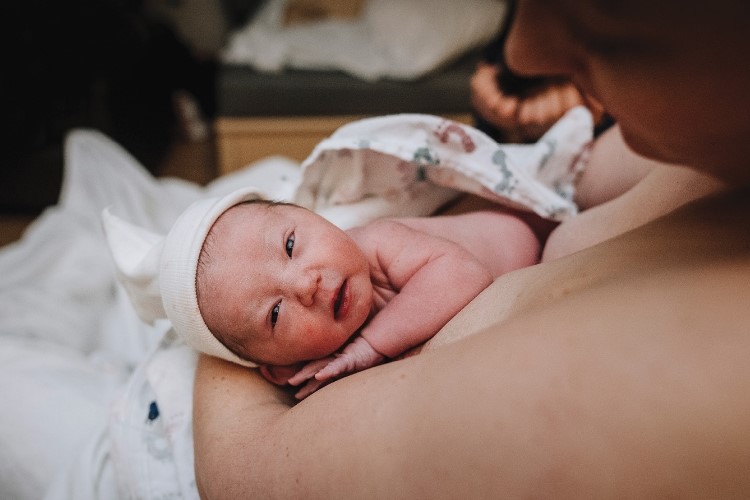
THE INCREDIBLE JOURNEY
Working with what we do know, let’s see if we can recreate childbirth – for simplicity’s sake, a normal, ideal, textbook birth – from the baby’s perspective.
She starts off upside down: head wedged in the pelvis, limbs still able to squirm around, but feeling pretty tight. She may have been head-down for weeks now. In an adult, being upside down for that long would cause a swollen head, blurred vision, heart and breathing difficulties, and eventually death. But for various reasons – a baby’s small size, even pressure from the surrounding fluid, the lack of breathing – she’s perfectly happy, and probably doesn’t ‘feel’ upside down at all.
For weeks now, Baby will have been noticing occasional ‘tightenings’ of the uterus – Braxton-Hicks. So when early labour begins, it won’t be a shock – contractions will feel like more of the same, only getting gradually stronger.
Of course, once Mum wakes up to the fact that labour has started, Baby may well start to feel her excitement and trepidation as well, as Mum’s hormones pass through the placenta. As the contractions get more intense, cortisol – a stress hormone – will be passed along too.
This isn’t necessarily a bad thing. Because Baby has never had to breathe, her lungs are deflated and stuck together with various gooey, mucousy liquids. Cortisol triggers Baby’s lungs to start producing surfactants – like detergents – which lubricate the lungs and help break the surface tension of the fluids, so when she takes her first breath, the lungs will inflate easily. This is one reason why babies born by elective Caesarean section tend to have more trouble breathing – the lack of stress from labour pains means the surfactants aren’t produced and the lungs stay ‘boggy’.
Cortisol performs another function, too – it acts as a ‘wake-up’ hormone. Full-term babies tend to sleep 85-90% of the time, just like newborns. But after birth, it’s important for Baby to be alert enough to find the nipple, have a drink, bond with Mum and all that fun stuff. Babies still sleep during labour – even during contractions – but cortisol ‘caffeinates’ them, as it were, for the vital half-hour or so after birth. (After that, they tend to pass out for a good long rest – perhaps more evidence that birth is hard work for babies, or perhaps just a boon for exhausted new parents!)
What do the contractions feel like? Probably not too bad. Baby is cushioned on one side by the placenta, and all around by the amniotic fluid. Childbirth writer Henci Goer confidently states that babies “experience contractions as an all-over stimulating massage”.
Due to the placenta’s blood vessels being slightly squeezed during a contraction, Baby does experience a small drop in oxygen levels. She compensates for this by an increased heart rate following each contraction.
So labour progresses. More squeezing, more cortisol. At some point – perhaps when Baby’s head is pressed into the cervix so tightly that the bag of waters is bulging – the waters will pop like a balloon, and whatever amniotic fluid can escape past the plug of Baby’s head will drain out.
THE GREAT ESCAPE
Now comes the tricky bit: birth. This requires Baby to squeeze through the narrow, concertinaed passage of the vagina, and it can only happen if she makes herself as small as possible for the journey. Luckily, a series of reflexes in combination with physics work together to make this possible.
As powerful muscles squeeze her, Baby turns to face her mother’s back and drops her head so her chin is touching her chest. The back of her head is now pressed directly against the cervix. Tucking in her head allows her to ‘duck’ under the pubic bone – after that, she lifts her chin again for a more streamlined entry into the world.
To make her head even smaller, the pressure of the cervix causes the bony plates of her skull to shift and overlap, compressing her head diameter by as much as 2cm. The longer the labour, the more of a ‘conehead’ she may have – but only for a few days, after which everything slowly slides back into place.
Also helping her out is the Galen reflex, which encourages her to wiggle to one side or the other when her spine is stimulated on either side. Rather than being passively squeezed out like toothpaste, Baby actually helps herself wriggle forward in the birth canal!
In most cases, drips of ‘hindwaters’ (the amniotic fluid held behind the plug of Baby’s head) will escape from time to time, lubricating the birth canal to make passage easier. Still, it’s crushing – tight enough to squeeze mucus and fluids from Baby’s lungs. Again, this is good preparation for breathing after birth.
In fact, even when Baby’s head finally emerges through the tight ring of flesh, a little at a time, and Baby’s face is in the open air, she can’t breathe. She may open her eyes and look around, but as far as her body’s concerned, she’s still not born – her lungs are far too compressed to fill with air. In case you’ve ever wondered, this is why babies don’t drown during water births. Even if it takes a few minutes between their head being born and the whole baby surfacing, they’re still getting oxygen quite happily through the umbilical cord.
Once her head is out, the tight fit causes her to turn her head to one side, activating another reflex – the ATNR (asymmetrical tonic neck reflex). This rather cunning system causes the limbs on one side of Baby’s body to flex, while the limbs on the other side extend. (Take a peek at a young sleeping baby sometime – the reflex persists for months.) In childbirth, it results in a kind of shrug which helps one shoulder to pop out, and then the other.
And once the shoulders are born – out she slides! A vast relief to Mum: but while Baby no doubt appreciates the lack of crushing pressure, her world has suddenly turned very alien indeed.
A WHOLE NEW WORLD
It’s cold – she’s gone from cosy internal body heat to not only a sudden drop in temperature, but also heat loss due to the evaporation of the fluids she’s covered with. It’s bright – she’s seen light before, but only filtered through abdominal flesh. And for the first time she can remember, there are suddenly no walls, no resistance – not even the push-back of water against her flailing limbs. She’s in outer space.
With the sudden release of pressure from her chest, she lets out a cry. Her lungs inflate for the first time, and she breathes. After a few minutes, to ensure all her blood is pumped back out of the placenta into her body, the umbilical cord is officially retired: her brand-new respiratory system is up and running.
Lying on her mother’s tummy, Baby is alert and watchful in this new, strange environment. She enjoys the warmth of skin-to-skin contact; she recognises her mother’s voice, even though it sounds pretty different on the outside.
She can’t see very far ahead – 30 centimetres at most – but she does see contrast well, and when a familiar smell catches her attention, she lifts her head and stares at her new goal: a nipple, darkened during pregnancy especially for her baby eyesight, apparently secreting the same amniotic fluid she enjoyed drinking in the womb.
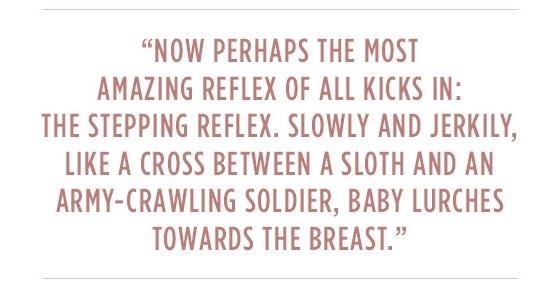
Now perhaps the most amazing reflex of all kicks in: the stepping reflex. Slowly and jerkily, like a cross between a sloth and an army-crawling soldier, Baby lurches towards the breast. It may take forty-five minutes and many false starts, but most of the time, if left to herself, she’ll reach the nipple, root around, and finally latch on. The drink she finds isn’t amniotic fluid after all – that was a ruse, a secretion by the Montgomery glands around the areola – but hey, colostrum’s good too.
She’s at the perfect distance now to gaze, cross-eyed, at her mother’s face. She’s made it. She suckles, contentedly oblivious to the contractions this stimulates as Mum’s uterus shrinks back down and the placenta detaches. The warm physical contact gradually replaces cortisol with oxytocin – the love hormone – and sooner or later, she drops off to sleep. She deserves it. She’s had quite a day.
|
Sarah Tennant lives in Te Awamutu with her husband and four children. She sincerely hopes that, if her children grow up remembering their own births, they will keep the gory details confidential. |
Photography: Esther Edith Birth Photography, estheredith.com

AS FEATURED IN ISSUE 43 OF OHbaby! MAGAZINE. CHECK OUT OTHER ARTICLES IN THIS ISSUE BELOW


